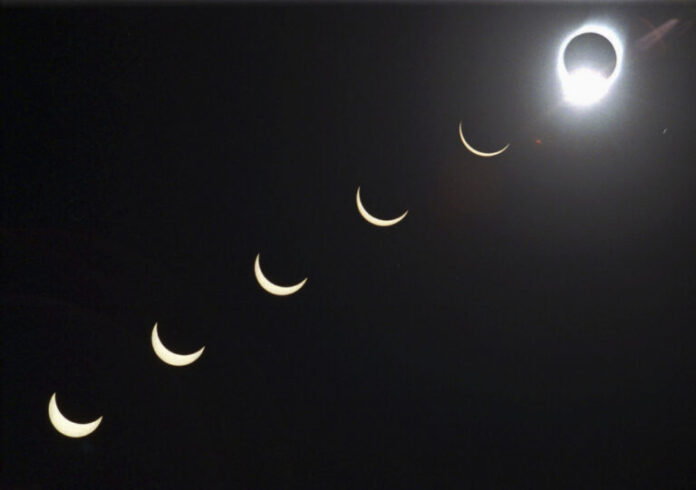Prepare to be awestruck as a celestial spectacle unfolds across North America with the arrival of a total solar eclipse on April 8. This breathtaking event promises to transform day into night, captivating skywatchers with its dramatic display. Total solar eclipses are renowned for their dramatic impact, casting darkness over the landscape as the moon obscures the sun. However, these awe-inspiring phenomena are only visible from select locations, making the opportunity to witness one a truly once-in-a-lifetime experience.
Before watching a solar eclipse, it’s important to take certain precautions to ensure your safety and make the most out of the experience.
Read More: NASA’s Hubble Telescope Delivers Jaw-Dropping Image of Galaxies in Cosmic Collision
Here are some things to consider:
- Research the Eclipse: Learn about the timing, duration, and visibility of the solar eclipse in your location. This will help you plan when and where to observe it.
- Use Proper Eye Protection: Never look directly at the sun, even during an eclipse, as it can cause permanent eye damage. Obtain certified solar viewing glasses or use solar filters specifically designed for eclipse viewing to protect your eyes.
- Check the Weather: Monitor the weather forecast for your location to ensure clear skies during the eclipse. Cloud cover can obstruct visibility, so choose a viewing spot with minimal obstructions if possible.
- Find a Safe Viewing Location: Select a safe and comfortable location to observe the eclipse. Avoid areas with tall buildings or trees that could obstruct your view, and make sure you have access to shade and seating if needed.
- Arrive Early: Plan to arrive at your chosen viewing location well in advance of the eclipse to secure a good spot and set up any equipment you may need.
- Bring Supplies: Pack essentials such as water, snacks, sunscreen, and appropriate clothing for the weather conditions. Consider bringing a chair or blanket for seating during the eclipse.
- Set Up Cameras or Binoculars Safely: If you plan to photograph or view the eclipse through binoculars, make sure to use appropriate solar filters or lenses to prevent damage to your equipment and eyes.
- Be Mindful of Pets and Children: Keep pets and young children under close supervision during the eclipse to ensure their safety. Consider explaining the event to children beforehand and emphasizing the importance of proper eye protection.
- Observe Nature: Take the opportunity to observe any changes in the environment during the eclipse, such as changes in temperature, animal behavior, or the appearance of shadows.
- Enjoy the Experience: Once you have taken all necessary precautions, relax and enjoy the awe-inspiring spectacle of a solar eclipse. Remember to take breaks to rest your eyes and stay hydrated throughout the event.



